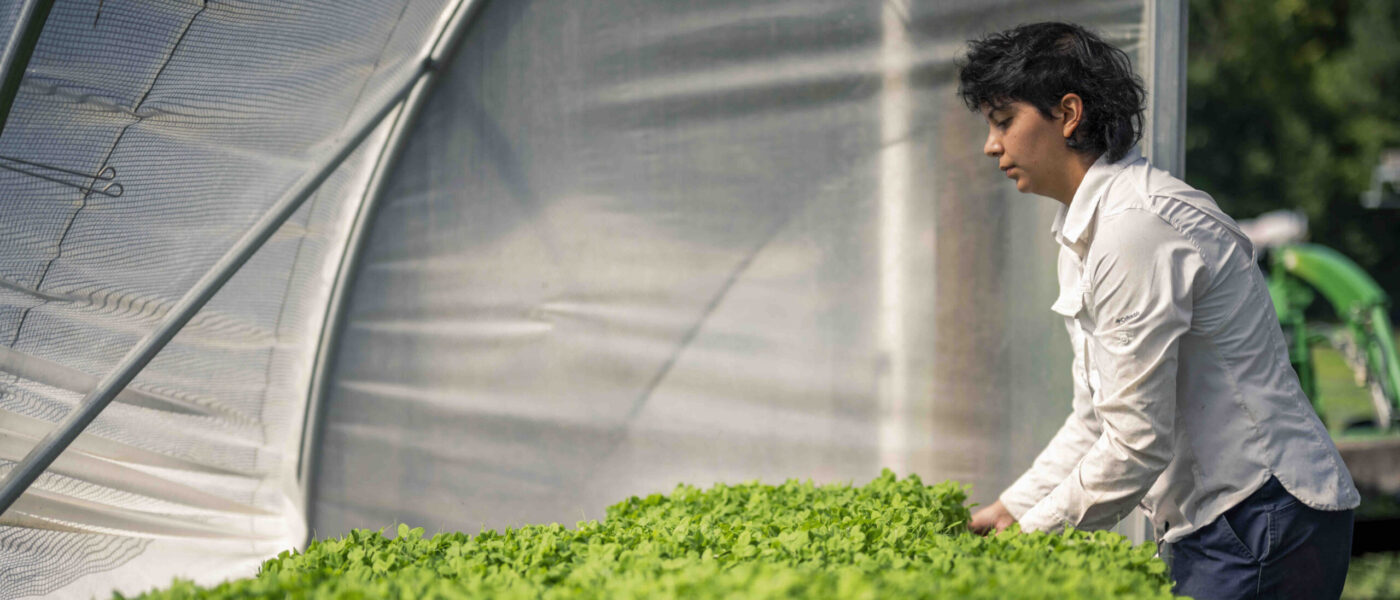May 2008
Dear Laura,
I’ve been combing your site to find your definition of a family farmer and I can’t seem to find it. How do you decide who is and isn’t a family farmer? How many family farmers are there in the United States?Betsy Childs
Carnation, WA
Hi Betsy,
Way to go straight to the heart of the matter! This is a great and not-so-easy to answer question. “Family farmer” is a fairly generic term that Farm Aid and other organizations use to mean a lot of different things. I’ve often heard people use the vague explanation “you know it when you see it,” which doesn’t really paint a clear picture in practical terms. So, it seems like it’s time to get something more concrete down on paper.
Before I launch into my usual long-winded answer, I do want to make a point about Farm Aid: Farm Aid runs a telephone hotline backed by a Farmer Resource Network of organizations that help farmers. The Farmer Resource Network helps ALL farmers. We do not screen our callers to see if they meet one definition or another. We just do our best to meet their needs. On the other hand, Farm Aid works hard to promote the voices and interests of family farmers with our educational materials, website and concert activities.
Okay, now on to your question. The reason that this is such a tricky one is that the phrase “family farmer” has strong personal, emotional and historical meaning for many people but there is no universal definition. Many of the organizations that we work with and fund have definitions or thoughts about what makes a family farmer but they differ from one to the other. In fact, if you go to the U.S. Department of Agriculture’s online briefing room that addresses this very same question, you’ll see that even they cannot agree on a single definition.
After spending a morning reviewing these various definitions, it was clear to me that there are two distinct routes to creating a definition. There is the quantitative approach based on statistics and a more qualitative approach based on the social and environmental ideals. Being a person who likes to simplify the world with clear, portable answers rooted in fact, I tried on the quantitative thinking cap for size first.
This also might be a good time to mention that in the 2002 USDA Agriculture Census (the most recent one in publication) farms and farmers are tracked, muddying the waters even further. According to their definition, any agricultural property that produces $1,000 or more in annual gross sales counts as a farm. Using this definition of a farm, they count 2,128,982 farms (not necessarily farmers) in the US. This total number of farms is then broken down into a variety of different statistics, including acreage, gross sales and type of farm operator.
First, I ruled out acreage as a defining category. Farmers can make a living on a half-acre or a thousand acres, depending on what and where they are farming. Then, I tried to use the category of gross sales to tease out a likely pod of family farmers. Putting an income floor and ceiling on the definition, based on census reported gross sales receipts, was very attractive because it would give us an easy way to identify a definitive number of family farmers. But the income floor was tricky right away. There are 1,039,884 farms in the U.S. with gross sales of less than $5,000 – that’s slightly less than half of all farms. Knowing that this represents gross sales and not net income makes it hard to consider that an individual could earn a living on this kind of farm, so perhaps these are not family farmers in the business of farming but hobby farmers. However, it is also likely that these farmers are doing the majority of the work themselves and growing food for sale to their community they can’t be ruled out entirely.
Onto the ceiling: The top bracket for gross sales in the USDA census is $500,000+ so I pitched the idea of capping family farm income at $500,000. I couldn’t imagine that much income failing to bring a profit. The thing is, there are massive costs in running a relatively large family farm and in some cases, $500,000 won’t cover those costs. So, my idea of using $500,000 as a cap was rapidly debunked by some simple math. With the price of corn so high last year, any farmer growing corn on over 650 acres or so (depending on yield) is automatically ruled out by this gross income cap. I personally know a few corn farmers in Iowa that are definitely family farmers and wouldn’t fit into a sales cap like this one. It sure doesn’t mean they are pocketing all that cash (because this number is gross, not the net income after all the farmers’ expenses are factored in) but that’s a whole other set of statistics. So at this point, it seems safe to say that income doesn’t really work as the determining factor.
On to type of farm operator: In the USDA census, farm operators are broken up into the following categories: family or individual, partnership, corporation, or other (this includes cooperatives, estates, trusts and institutions). After years of working the hotline, talking with farmers who have done just about everything to keep the farm in the family, I know that ownership structures can be complicated and often vary from farm to farm. The first two categories, family/individual or partnership, definitely seem to work with a general concept of what defines a family farmer. I am also inclined to include the “other” category. That leaves us with corporations. Luckily, the handy-dandy census breaks out for us which corporations are family-held and which aren’t. According to the census, there are 7,085 non-family held corporate farms in the country. Subtract that from the total number of farms (2,128,982) and we get 2,105,858 family farms in the country.
At this point, then, we can safely say that most U.S. farmers are family farmers. But to round out the definition a little more, it is critical to include the elements of labor and management. Almost everyone agrees that a family farmer is someone who makes the management decisions and provides the bulk of the labor on the farm. In fruits, vegetables and other specialty crops, we know that many farmers need to hire seasonal labor for harvesting and processing. Family farmers, though, are right out there on the fields managing each harvest alongside their laborers. So, it seems that we have the start of a definition:
“Farm Aid defines a family farm as one where the farmer makes the management decisions, the family provides most of the farm labor and the farmer seeks to provide the bulk of his/her income through the farm operation. Non-family held corporations are excluded.”
Trick is, the numbers are a little dry. Even talking about labor and management doesn’t really give a sense of the more qualitative side of what it means to be a family farmer.
According to our brand new definition, U.S. family farmers control 928,959,222 acres – a total area that is 5.4 times the size of Texas! With this much land under the stewardship of family farmers, they have a tremendous opportunity to improve soil, water and air quality while growing good food for all. Many farmers maintain that part of being a family farmer means leaving the land in better shape than they found it, increasing the chance of the next generation enjoying bountiful harvests. Beyond their role as environmental stewards, family farmers also play a part in strengthening local communities.
As small businesses and food producers, family farmers have a unique perspective and often play a strong role in their communities. As business owners, family farmers can employ many people – giving them the opportunity to promote the values of fair labor practices and wages for their workers. Family farmers also save seeds, maintain rare breeds of plants and animals and introduce our taste buds to delectable new treats every now and then.
Environmental stewardship, community involvement, fair labor practices and preserving the heritage of family farming make up an ideal of what it means to be a family farmer. Not every farmer who meets our technical definition does all of these things but they have the potential to do so. In times of high food prices, food insecurity and climate change, protecting and fostering this potential is one of the most important jobs us eaters can do.

